Step inside the Gamble House, a breathtaking architectural masterpiece that perfectly embodies the Arts and Crafts movement. This iconic Pasadena home, designed by the renowned Greene & Greene, features an interior that seamlessly blends exquisite handcrafted details, exotic woods, and nature-inspired artistry. Discover how this landmark offers timeless design lessons, from its custom furniture to hidden storage, and learn why it remains a celebrated piece of American architectural history.
Gamble House in Pasadena
- 📍 Location: Pasadena, California
- 💰 Estimated Price: Priceless due to its status as a National Historic Landmark
- 🏗️ Year of Built/Remodel: Built in 1908-1909
- 🌳 Size of Land: Approximately 2 acres
- 🏠 Size of House: 8,100 square feet
- 🛏️ Rooms: 6 bedrooms, multiple living spaces
Table of Contents

Historical Context of the Gamble House
The Greene brothers, Charles and Henry Greene, were the masterminds behind the Gamble House, and their influence in Pasadena and the broader world of American architecture cannot be overstated. They weren’t just designing houses—they were crafting experiences. Their work is a cornerstone of the Arts and Crafts movement, which emphasized simplicity, craftsmanship, and a deep connection to nature. When you step into a Greene & Greene home, especially the Gamble House, you’re entering a world that rejects the mass-produced, soulless designs that were becoming more prevalent at the time. Instead, the Greene brothers focused on the handmade, on using materials that felt alive and telling a story through every inch of the space.

Their architectural philosophy was rooted in the belief that a home should be a natural extension of its surroundings. They borrowed heavily from Japanese design principles, which celebrated natural materials and blurred the boundaries between indoor and outdoor spaces.
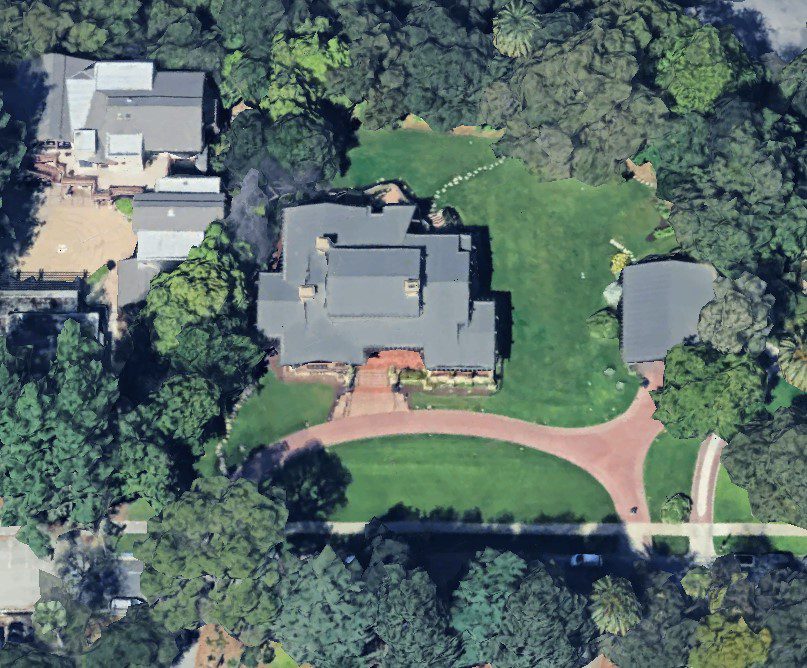
Every beam, every piece of furniture, every stained glass window was designed to fit harmoniously with the environment. It’s a philosophy that has inspired countless architects and designers—including myself. The idea that design should be more than decoration, that it should engage with its environment and evoke a sense of calm, is something I strive to bring to all of my projects.
Commission and Construction of the Gamble House

The Gamble family, of Procter & Gamble fame, commissioned the house as a winter retreat in 1908, and it was completed the following year in 1909. The family wanted a home that would offer an escape from the hustle and bustle of Cincinnati, and Greene & Greene delivered a sanctuary that went beyond even the Gamble family’s expectations.
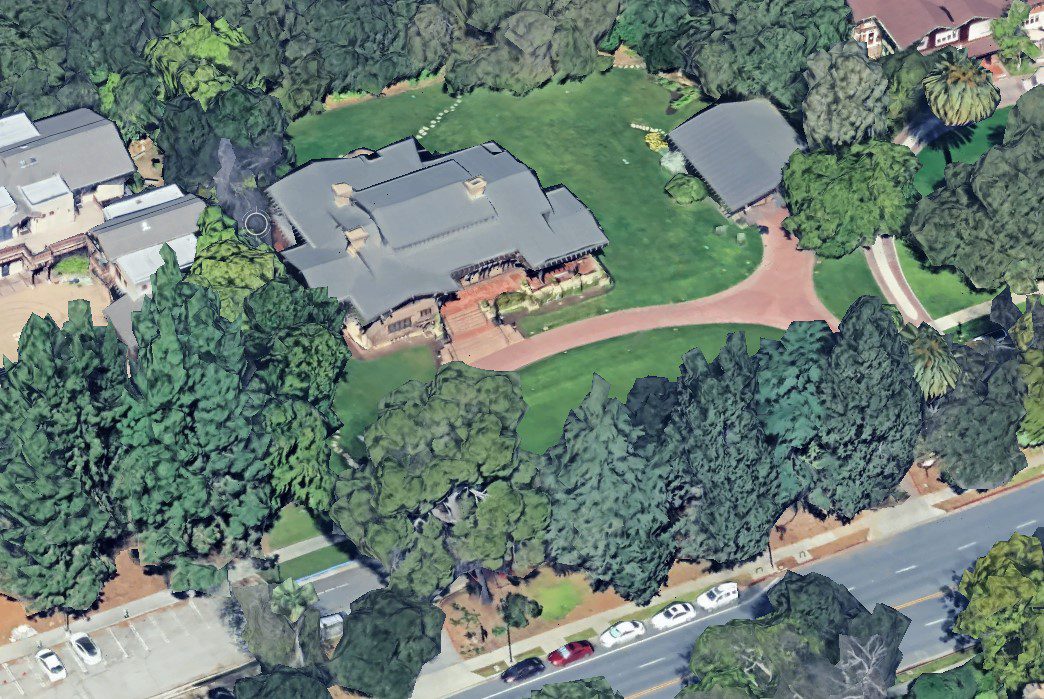
Constructed using a mix of local and international materials, the interior reflects the Greene brothers’ commitment to using only the finest materials, many of which were exotic and rare for the time. The brothers selected Burmese teak, Honduras mahogany, and oak to craft a space that feels rich and luxurious, without ever being over-the-top. Every material was chosen not just for its beauty, but for its ability to age gracefully. Even over a century later, the woodwork inside the Gamble House still glows with a warmth that only time and craftsmanship can produce.
One detail that blows me away every time is the way the woodwork seems to change with the light throughout the day. The interior takes on different moods depending on the time of day—early morning light softens the teak panels in the living room, while late afternoon sunlight filters through the stained glass, casting a kaleidoscope of colors across the mahogany surfaces. It’s no wonder the Gamble family fell in love with this house.
Signature Rooms of the Gamble House
The Living Room: Heart of the Interior Design
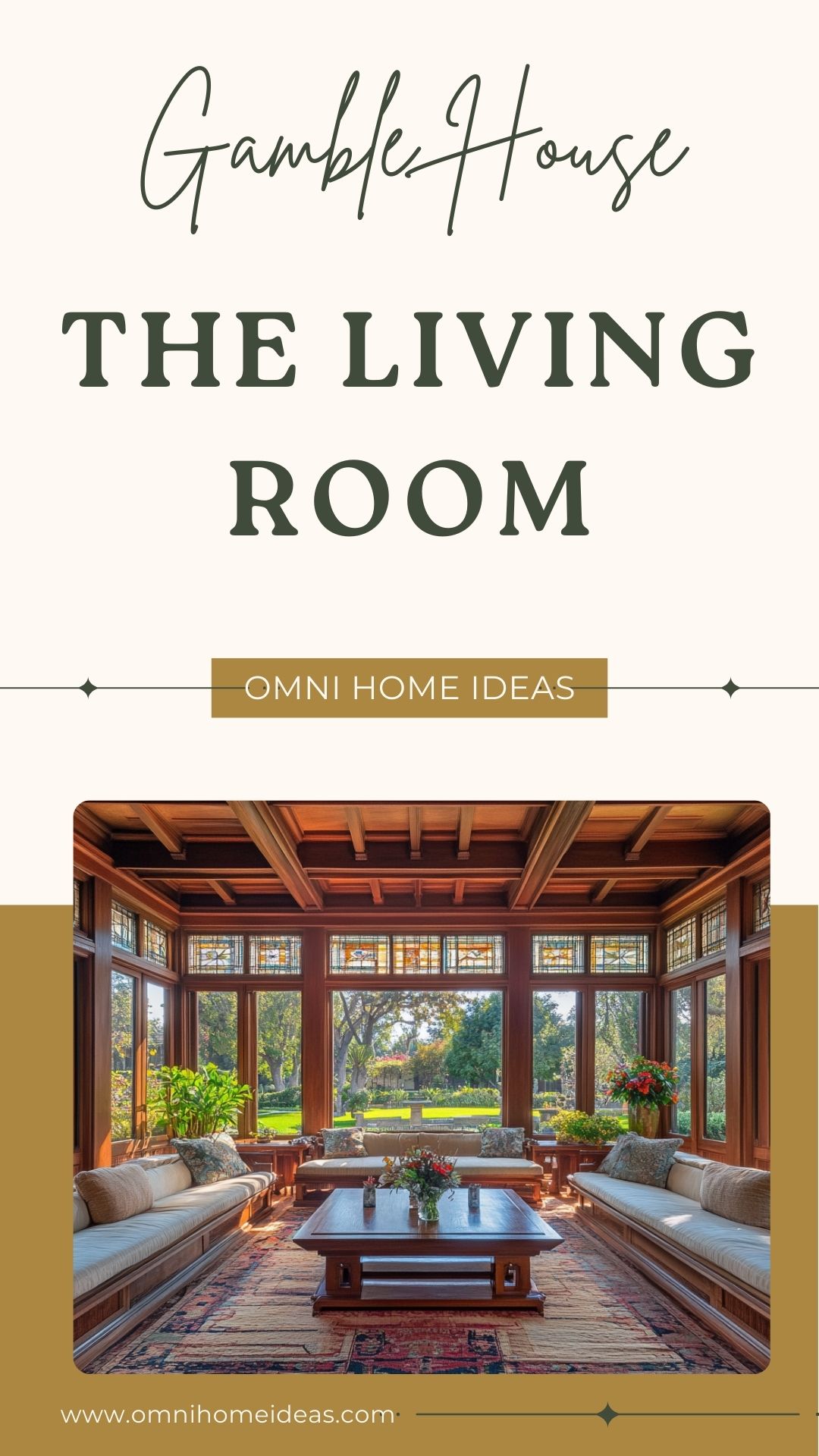
The living room is arguably the most striking room in the house—a space that showcases the Greene brothers’ genius for blending indoor and outdoor elements. With large windows that connect the inside to the lush garden outside, the room feels as though it’s in conversation with nature. These windows allow natural light to flood the space, creating a dynamic interplay of light and shadow on the wood-paneled walls.
One of the most captivating features of the living room is the use of stained glass windows. Designed with intricate, nature-inspired patterns, these windows not only add artistic flair but also bathe the room in soft, colorful light as the sun moves throughout the day. These aren’t your typical windows—they’re a canvas for light, creating a new experience each time you enter the room. The exposed wooden beams on the ceiling, crafted from the finest teak, are another testament to the Greene brothers’ obsession with detail. These beams serve both a structural and decorative purpose, drawing the eye upward and adding a sense of grandeur.
The Dining Room
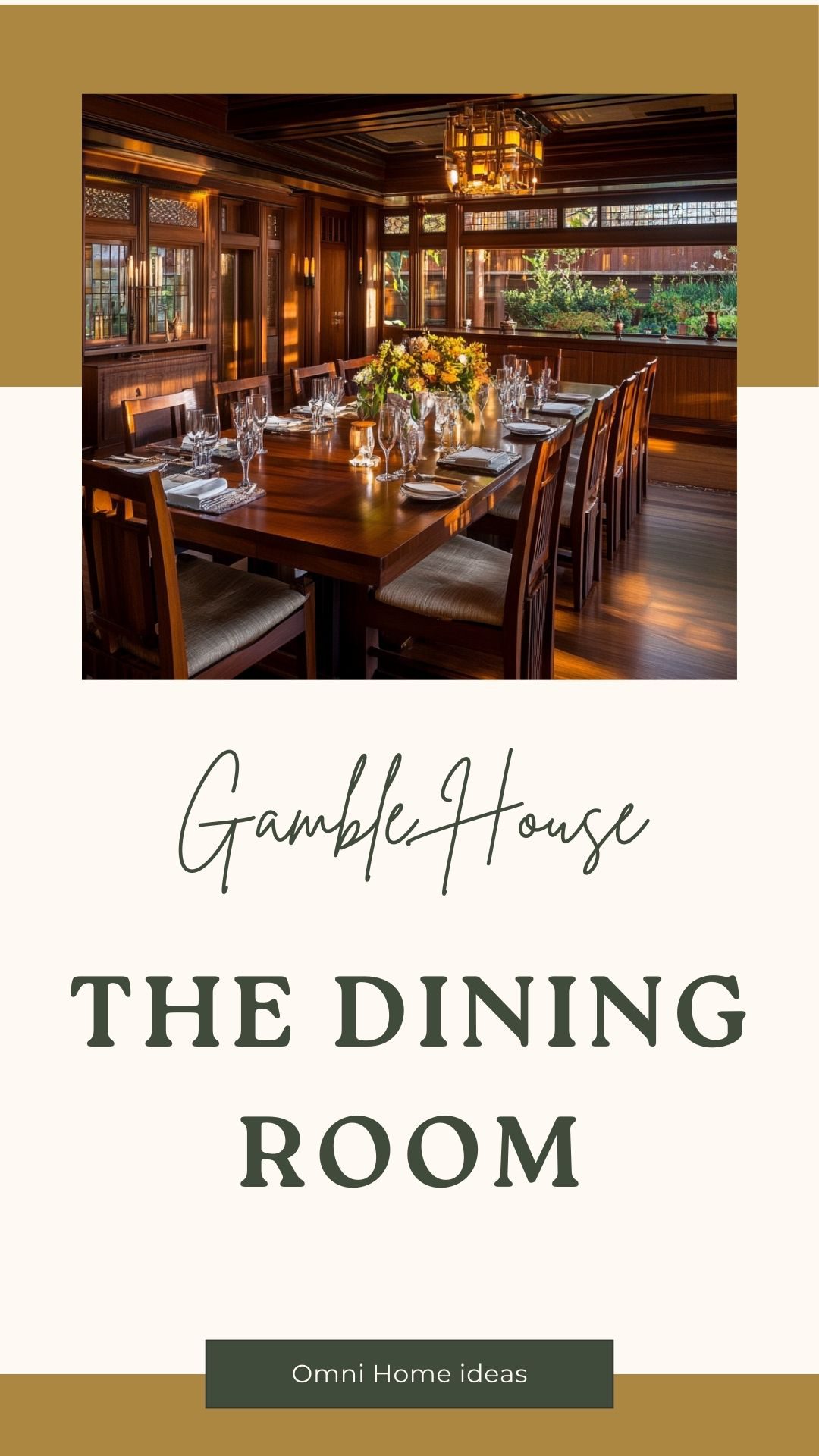
Stepping into the dining room feels like stepping into an intimate retreat. The focal point of the room is its handcrafted lighting fixtures, which cast a soft, warm glow over the mahogany dining table and matching chairs. These lighting elements weren’t chosen at random—they were designed specifically to complement the materials and colors in the room.
The cabinetry in the dining room is another work of art. Designed to display collectibles, fine china, and glassware, the cabinets are made from the same exotic woods found throughout the rest of the house, providing a cohesive and elegant aesthetic. Every aspect of the dining room’s design, from the furniture to the lighting, was carefully crafted to ensure a harmonious, relaxing space for the Gamble family to enjoy their meals.
The Library
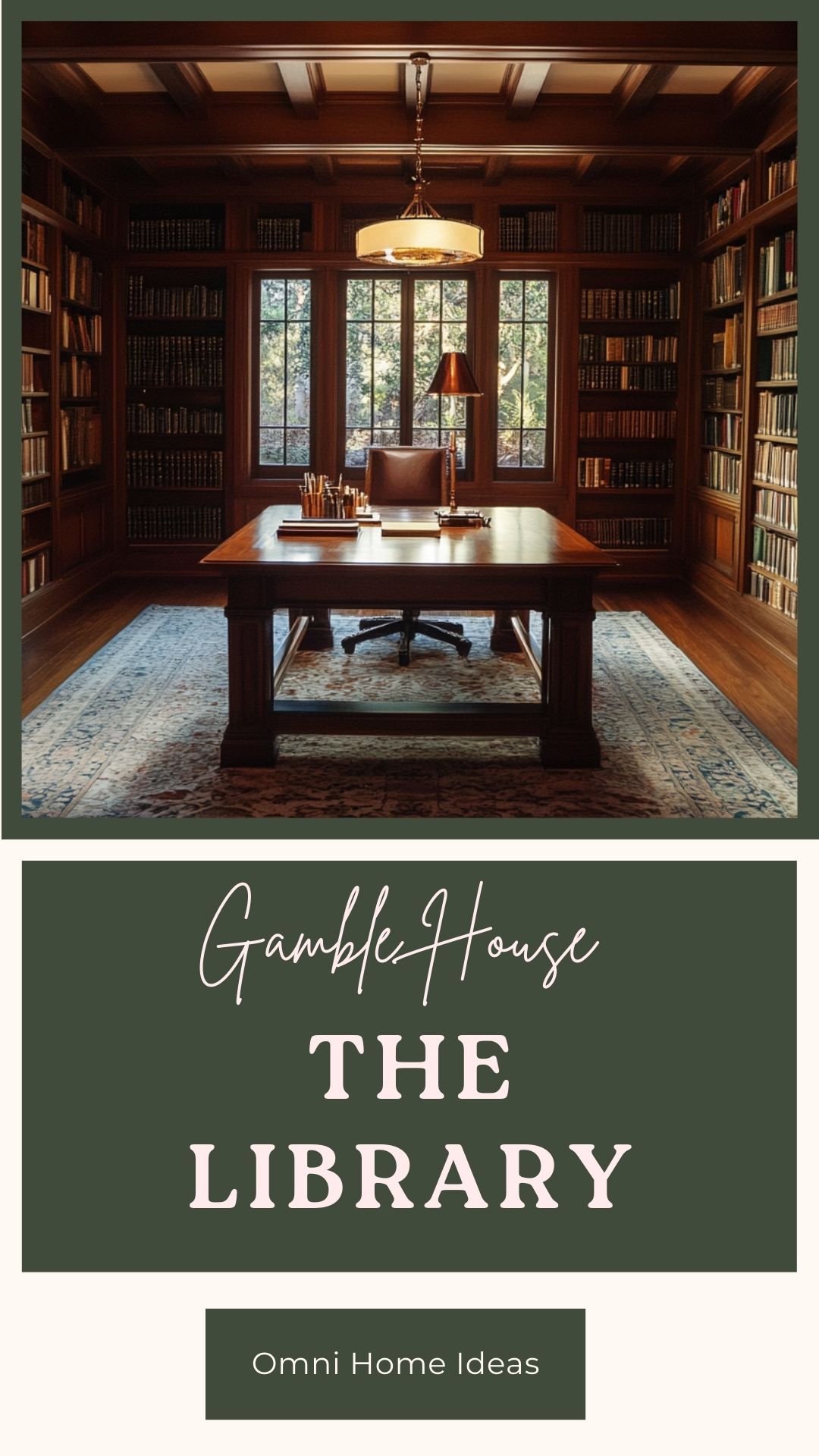
For lovers of literature (and I certainly count myself as one), the library is a dream come true. The built-in bookshelves line the walls, making the most of the vertical space and providing an elegant backdrop for the room’s centerpiece—a custom mahogany desk. The lighting in this room is soft and strategic, designed to create a cozy, intimate environment perfect for reading or studying.
The Greene brothers didn’t just throw in any old furniture here—everything from the bookshelves to the desk was custom-made to fit the space. It’s the perfect example of how form and function can coexist beautifully.
The Sleeping Porches
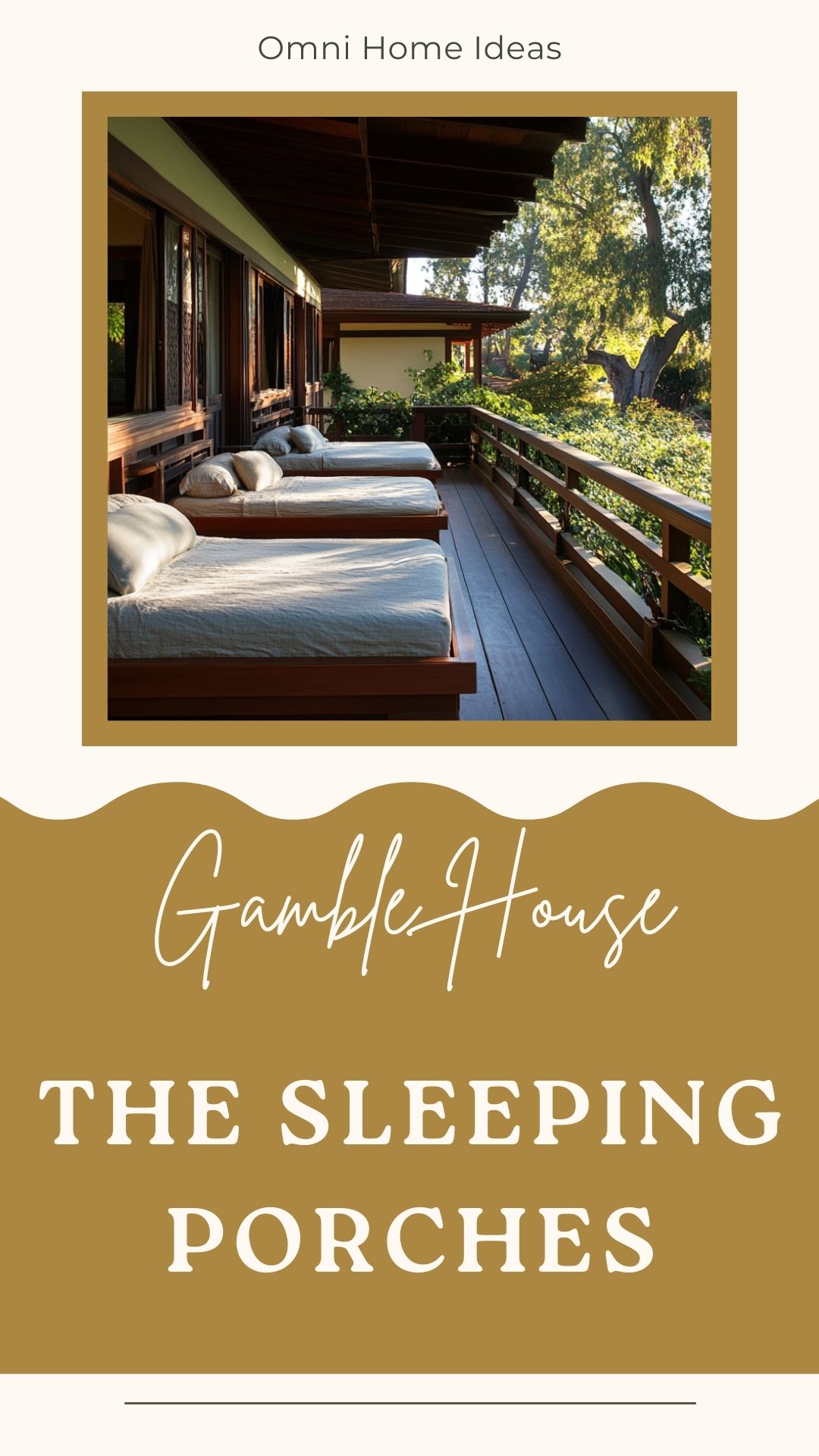
One of the most unique aspects of the Gamble House is its sleeping porches, which were quite innovative for the time. These open-air spaces allowed the Gamble family to sleep outdoors during the hot California summers, while still being protected from the elements. The porches were furnished with custom-designed outdoor furniture, crafted to complement the surrounding environment.
The idea of integrating nature into everyday life is at its peak here. The design of the sleeping porches blurs the boundaries between indoor comfort and outdoor living, providing the ultimate expression of natural integration that the Arts and Crafts movement cherished.
The Kitchen and Utility Spaces
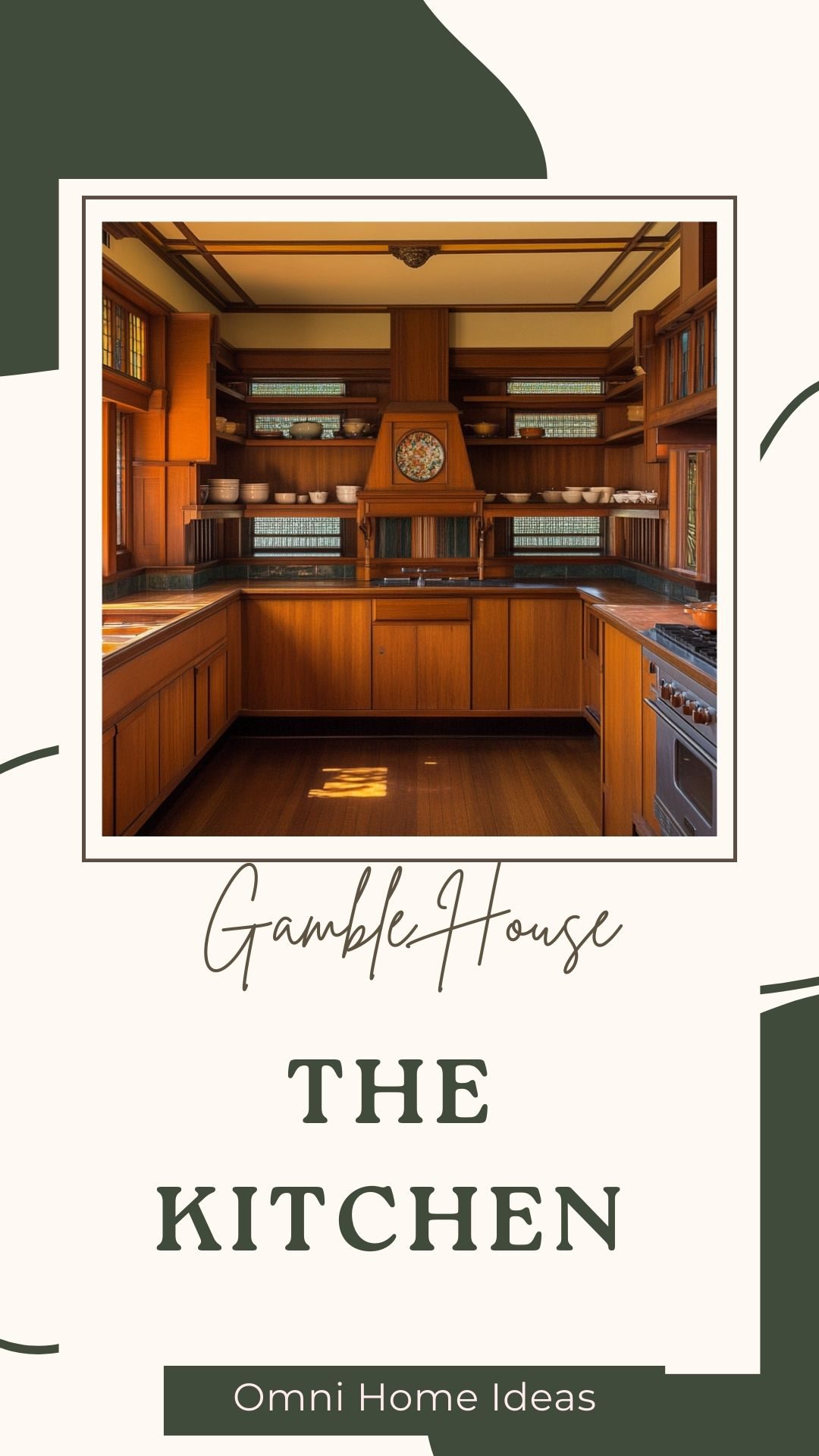
Even in the most functional areas of the home, like the kitchen and utility rooms, the Greene brothers’ attention to detail is apparent. These spaces are equipped with built-in storage and clever, efficiency-focused design that was cutting-edge for the early 20th century. From built-in cabinetry to the strategic use of natural light, the kitchen reflects a perfect balance between practicality and beauty.
Secret Design Elements and Features
Disguised Storage Spaces

The Greene brothers were masters of creating spaces that were both functional and beautiful, and nowhere is this more apparent than in their ingenious use of disguised storage spaces. Scattered throughout the house, there are hidden drawers and cabinets that blend seamlessly with the interior woodwork. These storage solutions are designed to be practical, without interrupting the flow of the design.
For example, in the bedrooms, wardrobes are cleverly built into the walls, often hidden behind paneled doors that match the surrounding woodwork perfectly. You’d never guess at first glance that these panels conceal storage spaces. The goal was to maintain a clean, uninterrupted aesthetic—functionality wrapped in elegance. It’s the sort of detail that most people wouldn’t think of today, but it speaks volumes about the Greenes’ design philosophy: even the most practical elements should be aesthetically harmonious.
Invisible Transitions Between Rooms

One of the most remarkable aspects of the Gamble House is how effortlessly the rooms seem to transition into one another. The Greene brothers used design elements like soft wooden curves, subtle molding, and exposed beams to create invisible transitions between spaces. You can walk from the living room into the dining room without ever feeling like you’ve entered a completely different space—everything just flows.
This is intentional. The idea was to create a home that felt like a cohesive whole rather than a series of disconnected rooms. The transitions are softened by the continued use of natural materials, especially the mahogany and oak that stretch across ceilings, walls, and floors. Each space feels different, yet related—a trick that makes the home feel both intimate and grand.
The Arts and Crafts Movement in the Early 20th Century
The Gamble House stands as one of the finest examples of the Arts and Crafts movement, which emerged in response to the rapid industrialization of the late 19th and early 20th centuries. This movement celebrated the value of handcrafted work over machine-made goods, and the Greene brothers were among its most dedicated proponents in America. The ideals of this movement—simplicity, craftsmanship, and natural materials—are evident in every corner of the Gamble House’s interior.

One of the most striking elements of the house is the influence of Japanese design, which can be seen in the open layouts, exposed wood beams, and delicate use of space. The Greenes often drew inspiration from Japanese architecture, especially its focus on simplicity and its reverence for natural beauty. In the Gamble House, this is reflected in the way the interior feels almost organic, as though it was carved directly from the earth rather than built by human hands.
The interior design of the Gamble House reflects the Arts and Crafts values in its every detail. It’s not just about creating a beautiful home, but about creating a home that feels alive, that breathes with its surroundings, and that offers a sense of calm and well-being. It’s this connection to nature and craftsmanship that makes the house not only a relic of its time, but also a timeless example of what great design can achieve.
FAQ
Where does the Gamble family live now?
The Gamble family no longer resides in the Gamble House. The house was donated to the city of Pasadena in 1966 and is now managed by the University of Southern California. It serves as a museum and a prime example of the Arts and Crafts movement, allowing visitors to tour the home and admire its design and craftsmanship.
What is the address of the Gamble House?
The address of the Gamble House is 4 Westmoreland Place, Pasadena, California, 91103. Located in a quiet neighborhood of Pasadena, the house is a National Historic Landmark and a popular destination for architecture enthusiasts and history buffs.
How much is the Gamble House worth?
While an exact current market value is difficult to determine due to its historic status, the Gamble House is considered priceless due to its architectural significance. As a National Historic Landmark, it is unlikely to ever be sold on the market, and its worth is more cultural than financial.
Can you visit the Gamble House interior?
Yes, the Gamble House is open to the public for guided tours of its interior. These tours offer a unique opportunity to explore the house’s remarkable craftsmanship, custom-made furniture, and hidden details that embody the Arts and Crafts movement.
What architectural style is the Gamble House designed in?
The Gamble House is designed in the American Arts and Crafts architectural style. This movement emphasized the use of natural materials, handcrafted elements, and a seamless integration of the house with its surrounding environment, all of which are reflected in the Gamble House’s design.
Conclusion
The Gamble House is a treasure trove of hidden details and architectural brilliance, where every room holds a new surprise and every corner reveals a new aspect of its masterful design. From the disguised storage spaces to the custom-made furniture and the innovative use of light and shadow, the Greene brothers left nothing to chance. Their design remains a benchmark for craftsmanship, reminding us that great architecture is not just about form, but also about the subtle details that bring a space to life.
This house isn’t just a relic of the past—it’s a living example of how the Arts and Crafts movement can still inspire us today. If you ever find yourself in Pasadena, do yourself a favor—visit the Gamble House, and take the time to look beyond the surface. The hidden beauty inside is worth the extra attention.

